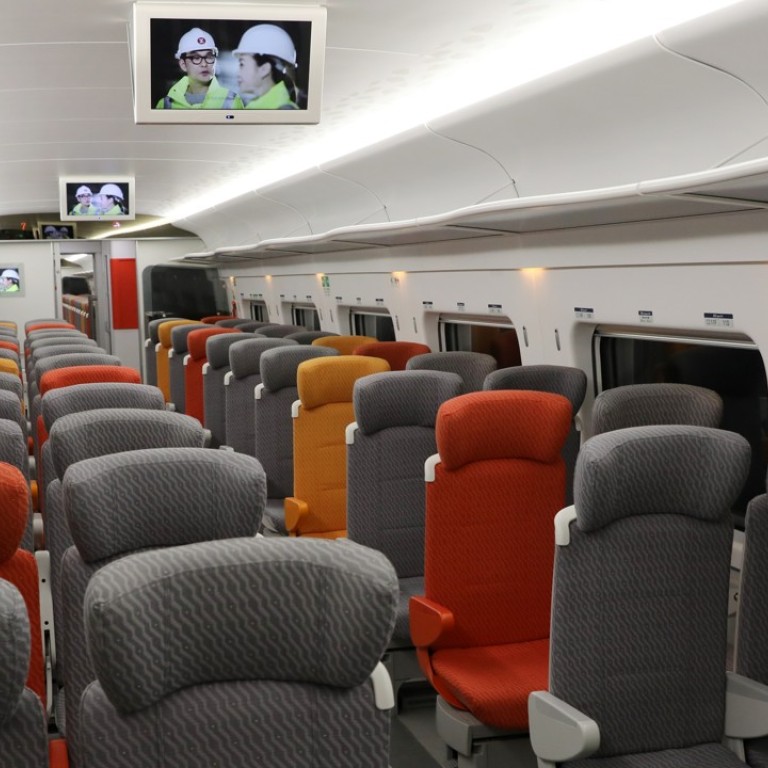
How long will journeys on the Guangzhou-Shenzhen-Hong Kong Express Rail Link take and how much will tickets cost? All you need to know about the new line
From train amenities to ticketing and data privacy issues, what you need to know before getting on city’s much hyped express service
The express rail link connecting Hong Kong to mainland China, long plagued by delays and cost overruns, will finally open on September 23, eight years after construction began.
The HK$84.4 billion (US$10.7 billion) Guangzhou-Shenzhen-Hong Kong Express Rail Link will provide a direct route from the West Kowloon terminal to 44 stations across the border, and is expected to serve 80,100 commuters daily.
During peak periods, there will be 114 short-haul trips running daily along the 26km Hong Kong section, with 70 on normal weekdays and 82 at weekends.
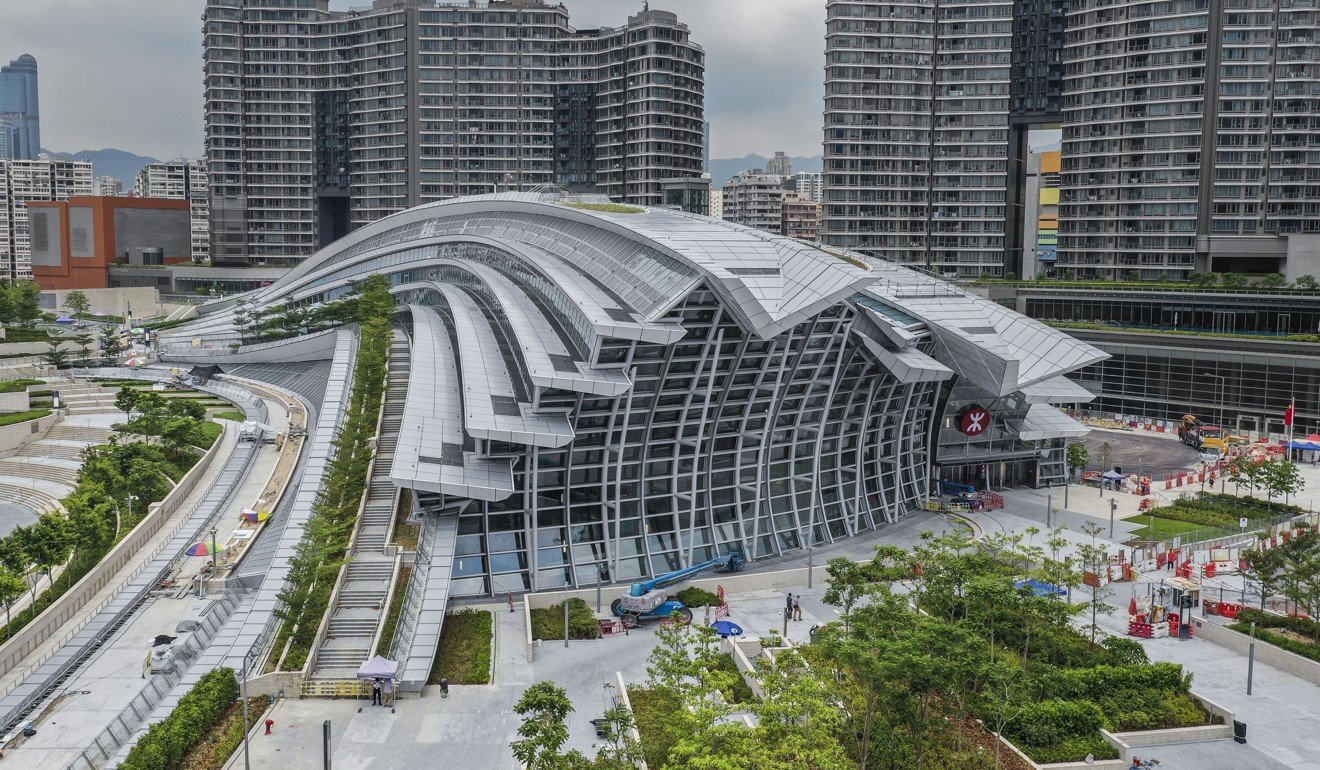
1. How long will journeys on the link take?
The MTR Corporation said it would take 14 minutes to travel between Hong Kong and Futian, Shenzhen, via the link, while the estimated time to Shenzhen North would be 19 to 24 minutes.
Currently, taking the MTR from Austin to Lo Wu or Lok Ma Chau and crossing the checkpoints there would require about an hour. Austin station is near the West Kowloon station.
If passengers want to venture further to Guangzhou South, a direct line running three daily train services on the express link would take 47 minutes – much faster than the two-hour train service running between Hung Hom and Guangzhou East.
There are other rides to Guangzhou South on the rail link, but they stop at various stations along the way and will take 50 to 71 minutes.
Travelling long-haul to cities such as Changsha, Guilin and Xiamen would take up to about four hours.
For a trip to Shanghai or Beijing on the express rail, the journey time is more than eight hours.
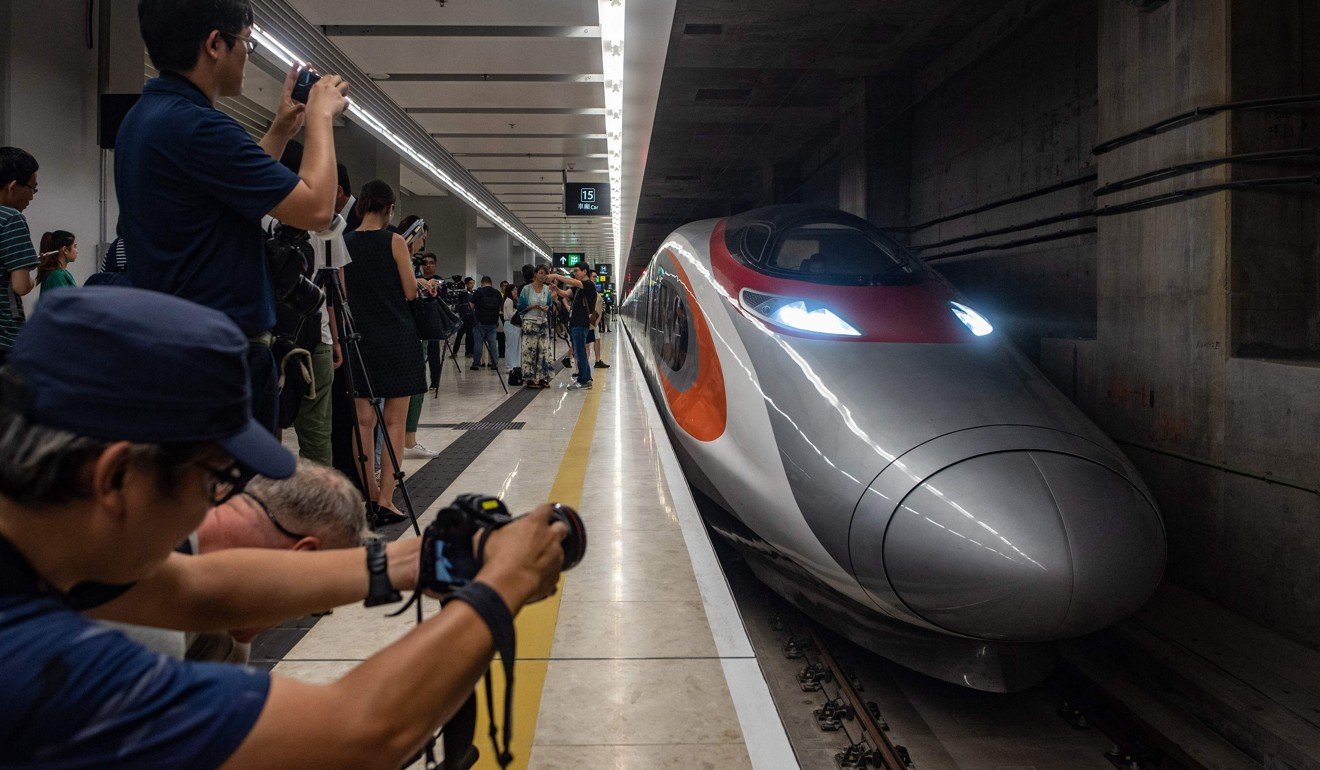
2. What are ticket prices?
Economy fares to six short-haul stops in Shenzhen and Guangzhou are priced between HK$78 and HK$247. Long-haul trips to destinations further into the mainland, such as Beijing and Shanghai, would cost up to HK$1,237.
Because the fares are set in yuan, prices of tickets sold in Hong Kong dollars will be adjusted each month based on the exchange rate. Besides economy seats, there are three other higher tiers, in ascending order – first class, premium class and business class.
The West Kowloon terminus will have 28 ticket counters, five of them reserved for trips to other mainland cities beyond the 44 destinations connected to Hong Kong by the high-speed rail.
Payments by cash, credit card and Octopus card are accepted, including online methods such as WeChat Pay, Apple Pay, Google Pay and Samsung Pay. Service charges for ticket purchases to destinations beyond the 44 destinations would be priced between HK$10 to HK$30.
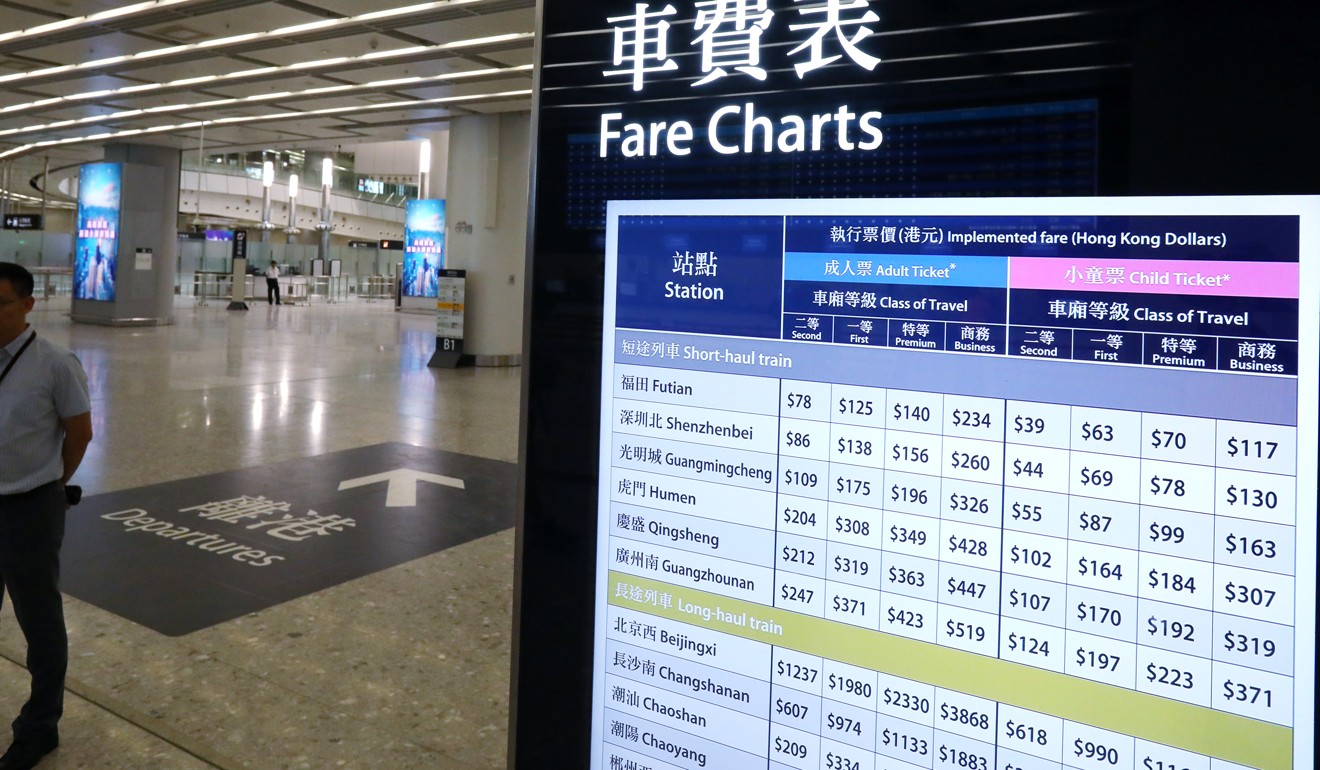
Tickets are also sold on the website of the state-owned China Railway Corporation, but at present these are available only to users with a mainland phone number. The Hong Kong government said it was in talks with authorities across the border to allow travellers from the city, who might not have a mainland number, to also buy tickets on the site in about six months.
3. What is the customs process at the West Kowloon terminus?
Departing passengers need to show station officers their personal documents and tickets for an identity check on the B1 level. The rail link will use a real-name ticketing system.
They will then pass through ticket gates and enter a zone for security checks on the same floor. Much like at an airport, X-ray machines and metal detectors will be used.
Luggage checks will take about 20 seconds, excluding queuing time.
Baggage allowance on trains will be stricter than Hongkongers may be used to. According to the China Railway website, passengers are only allowed to carry luggage with combined dimensions (length, height and width) of no more than 130cm.
“Rod-shaped” objects must not be longer than 2 metres. In terms of baggage weight, children are allowed 10kg and adults 20kg.
After the security checks, travellers will proceed to the B3 floor to clear immigration and customs. Under the joint checkpoint arrangement, they will clear both Hong Kong and mainland Chinese immigration and customs in the same station.
The MTR Corp advised passengers to arrive 45 minutes before their train’s departure time. Hong Kong transport chief Frank Chan Fan said a previous exercise showed clearance would take 30 minutes.
More than 10 existing bus routes will stop at the newly opened West Kowloon Station Bus Terminus, with three new routes, going to other parts of the city.

4. What facilities do the trains have?
Free Wi-fi and water dispensers are available inside carriages. First-class seats come with sockets to power or charge devices.
Some washrooms in carriages will also be big enough for wheelchair users.
The nine Hong Kong-owned trains at the terminal do not offer food services.
5. What else should passengers be mindful of?
Travellers departing from the city should be aware of the China Railway Corporation’s blacklist scheme. Passengers can be banned for a variety of reasons, from smoking to the speculative reselling of tickets and “other behaviours”.
It is expected that Hongkongers found in violation of rules would be added to this list.
In May, the mainland’s rail giant announced a list of seven types of bad behaviour that would result in a ban of 180 days from its vast high-speed network. But, the list also cited “other behaviours subject to administrative penalty according to relevant laws and regulations on the mainland”, without further elaboration.
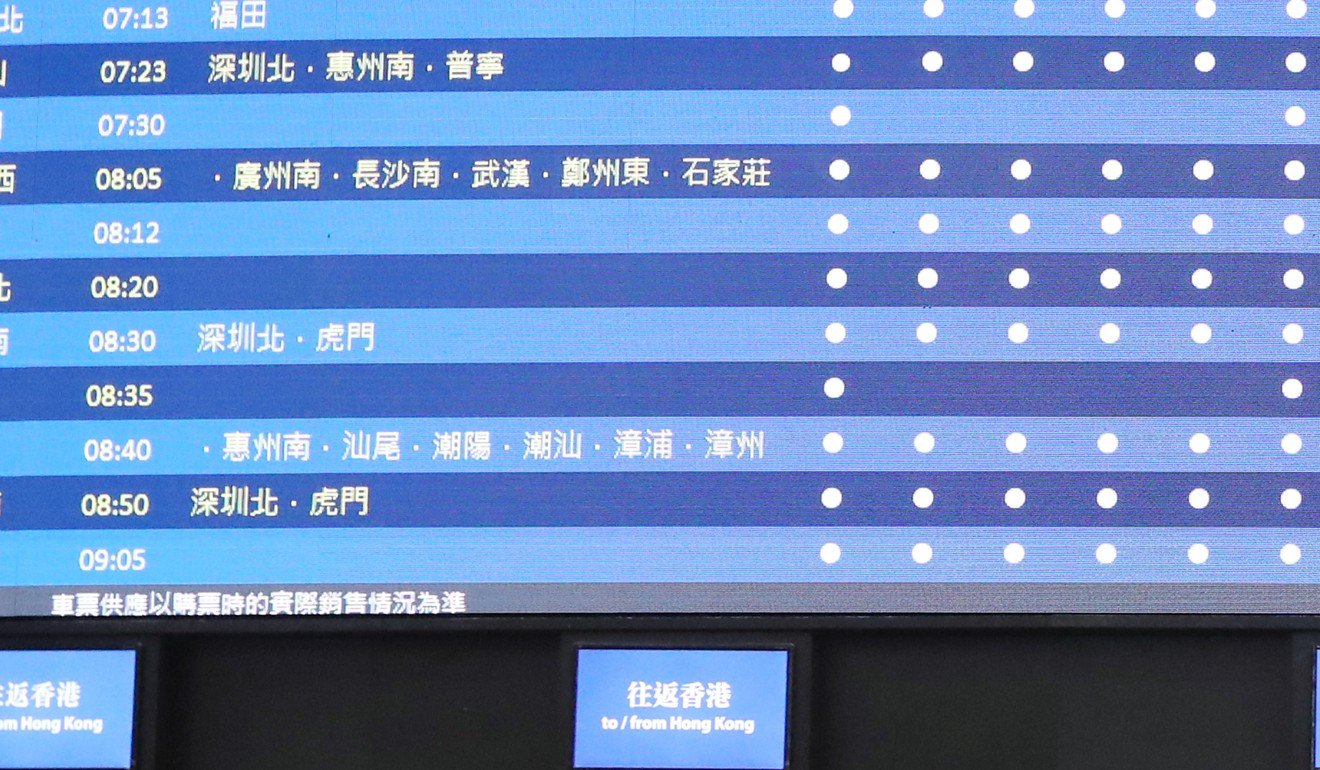
Privacy concerns have also been raised over free Wi-fi service at the station.
According to a disclaimer shown before a user can connect, the personal information of connected users could be shared with local and mainland officials for preventing or detecting crimes.
Frank Chan on Wednesday clarified that when passengers used the Wi-fi service in areas at the terminus under Hong Kong jurisdiction or on trains in Hong Kong, the information would be entirely confidential.
Technical glitch or are you on China’s blacklist for high-speed rail tickets?
For ticket sales, the MTR Corp’s statement on collection of personal information said passenger data would be shared with mainland rail operators or their agents, contractors or third-party service providers.
On Tuesday, some passengers were dismayed to find that ticketing machines at the terminal could not read first-generation home return permits, a travel document issued by mainland authorities for Hong Kong and Macau residents to cross the border on a regular basis. Some also found glitches in the online ticketing system in the morning.
About 6.8 million Hongkongers use home return permits The first-generation permits are those issued before January 1, 2013.
A commuter, surnamed Kwok, who holds such a permit, said he was told by MTR staff that ticket machines at the terminal could not process his purchase and he had to go to manual counters or use the online system.
“I can’t use the online ticketing system as it broke down this morning. I have no choice but to come to buy tickets at the terminus counter. As far as I know ticketing machines on the mainland can’t read the older-generation home return permits either,” he said.
Another first-generation home return permit holder, surnamed Lai, said he tried his luck at five machines, but to no avail.
“With so much money being spent on this high-speed rail, I don’t know why the MTR can’t overcome this technical problem,” he said.
Additional reporting by Cannix Yau

